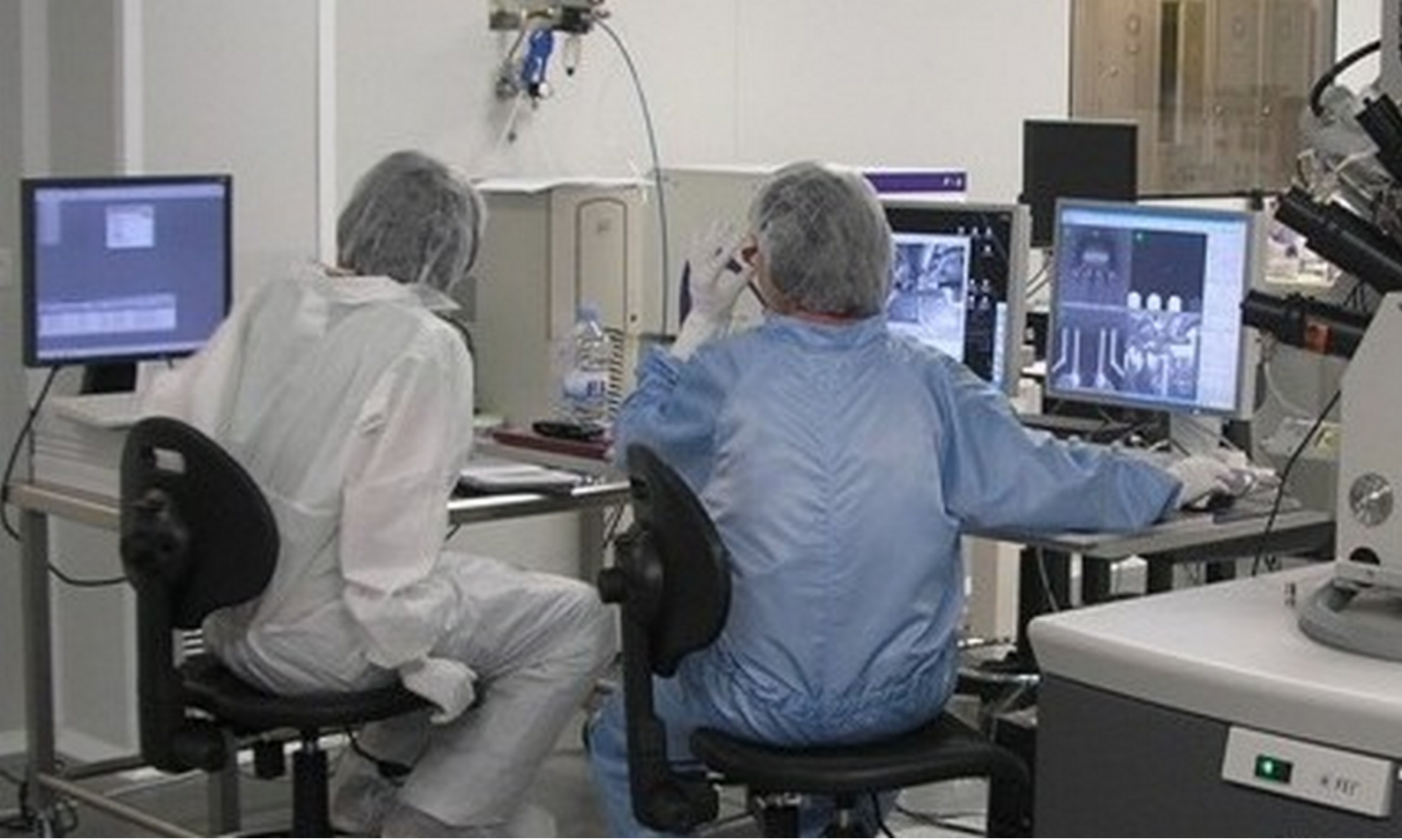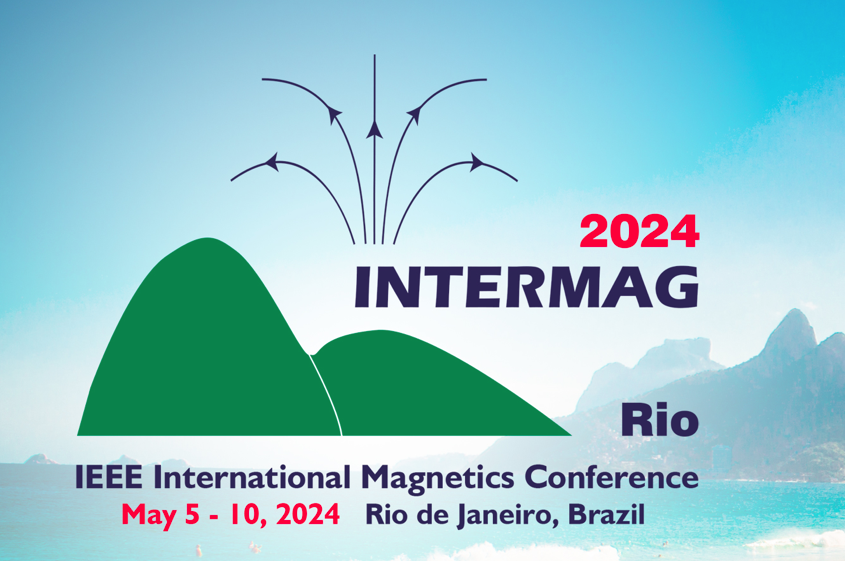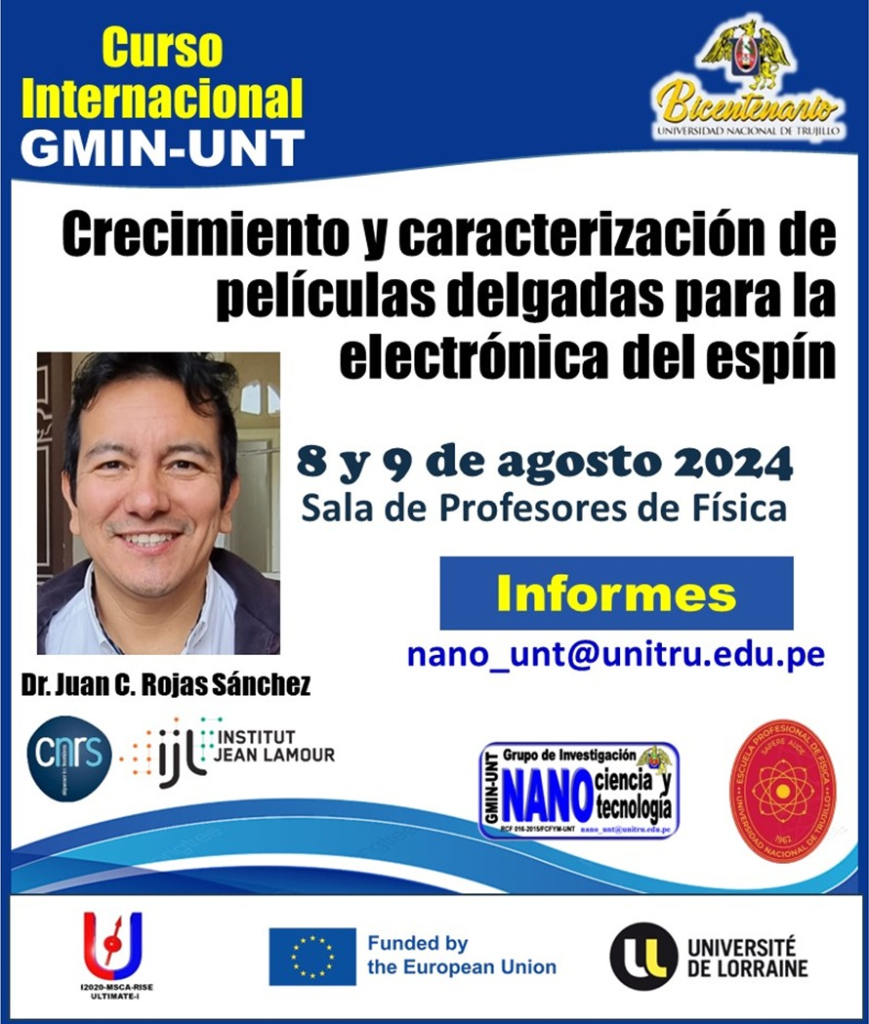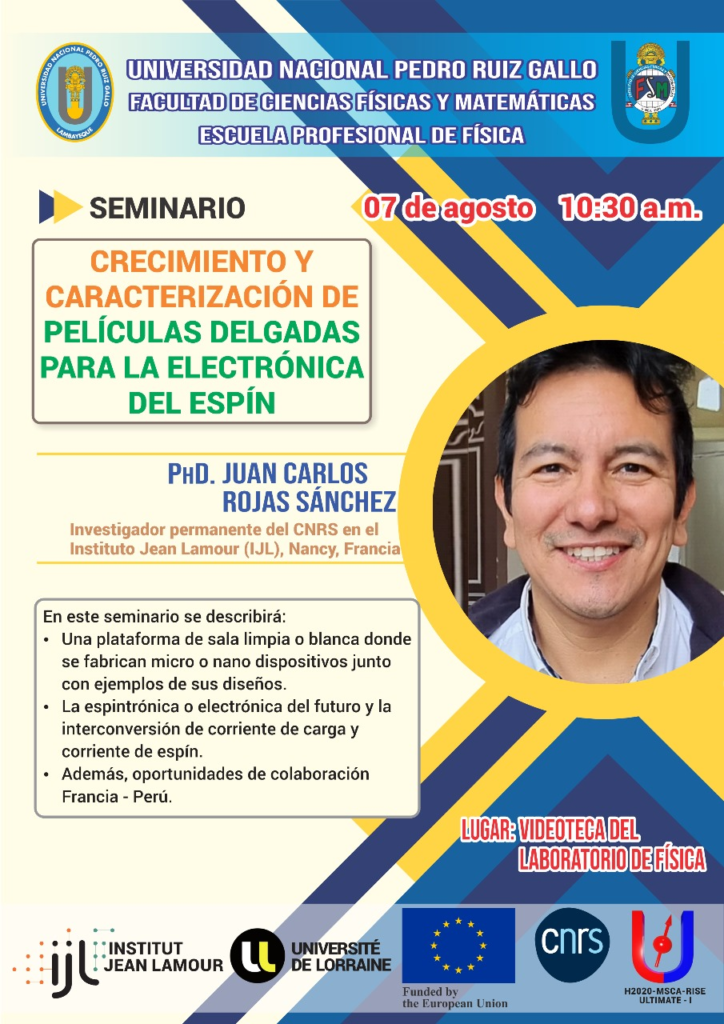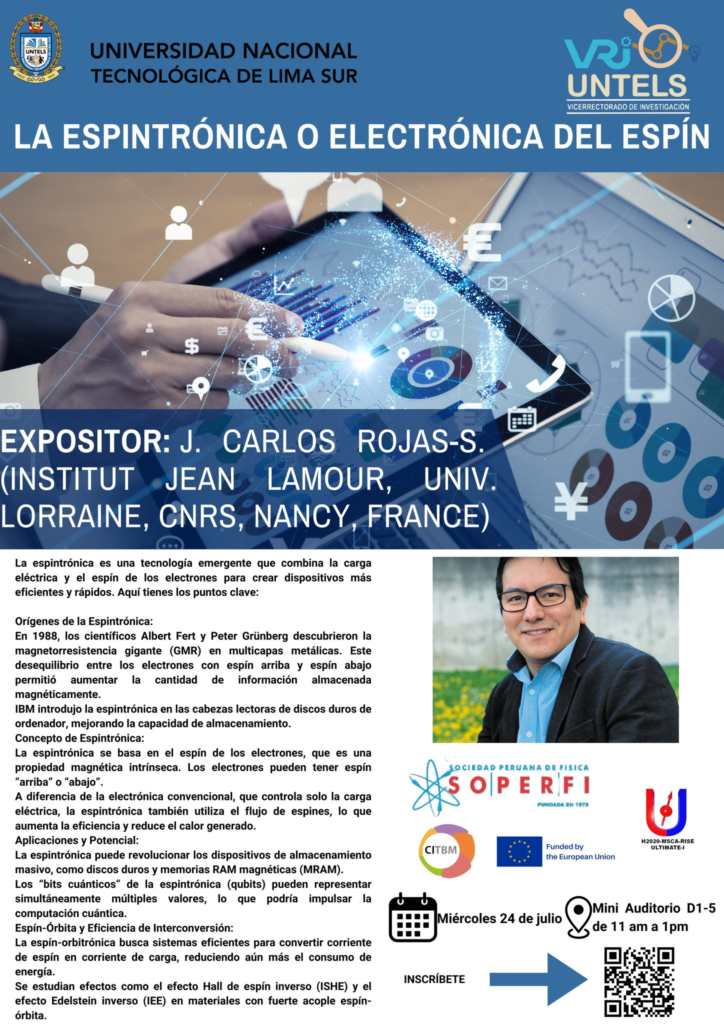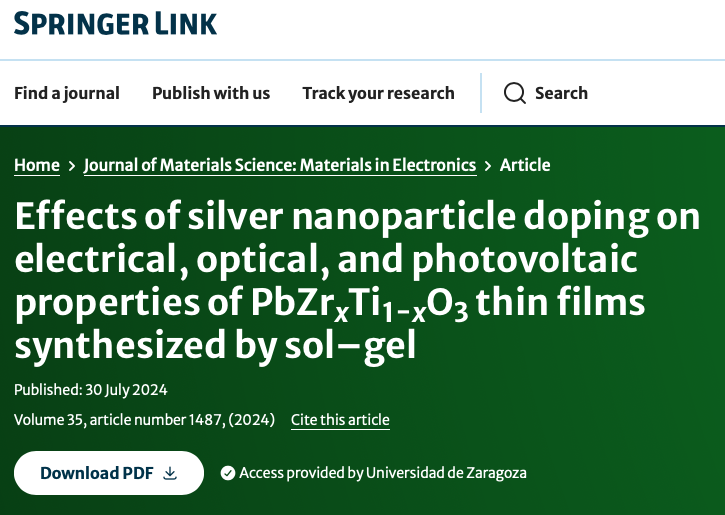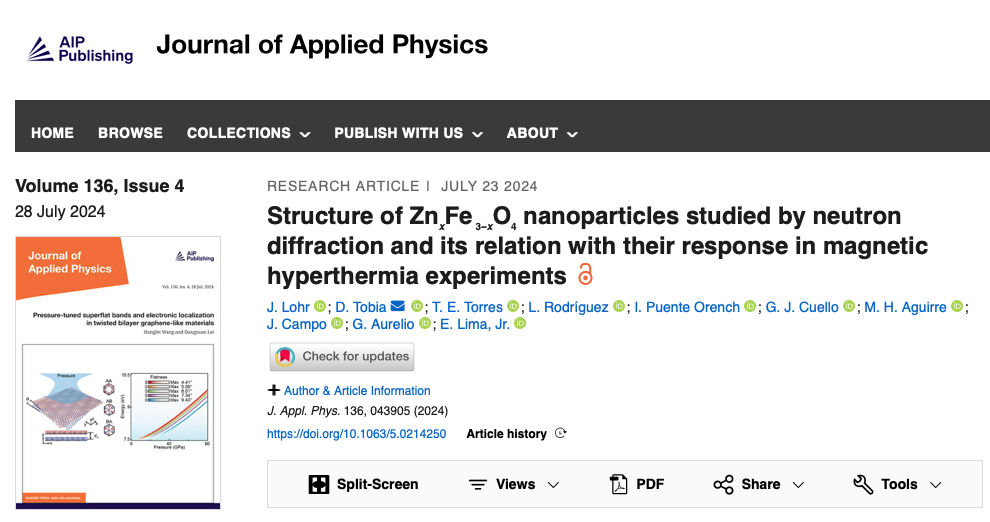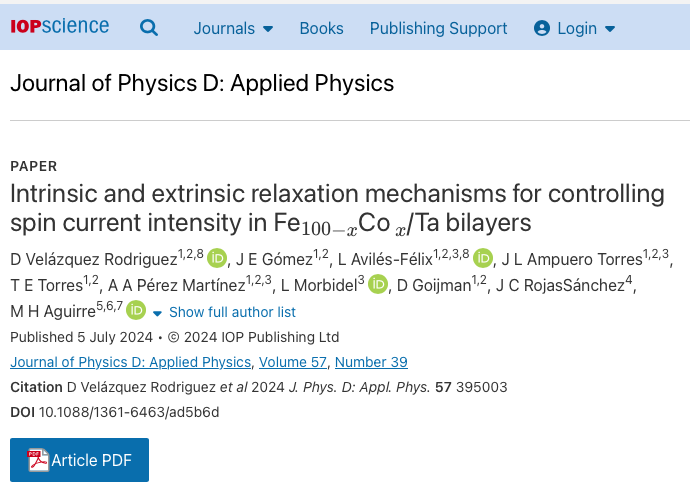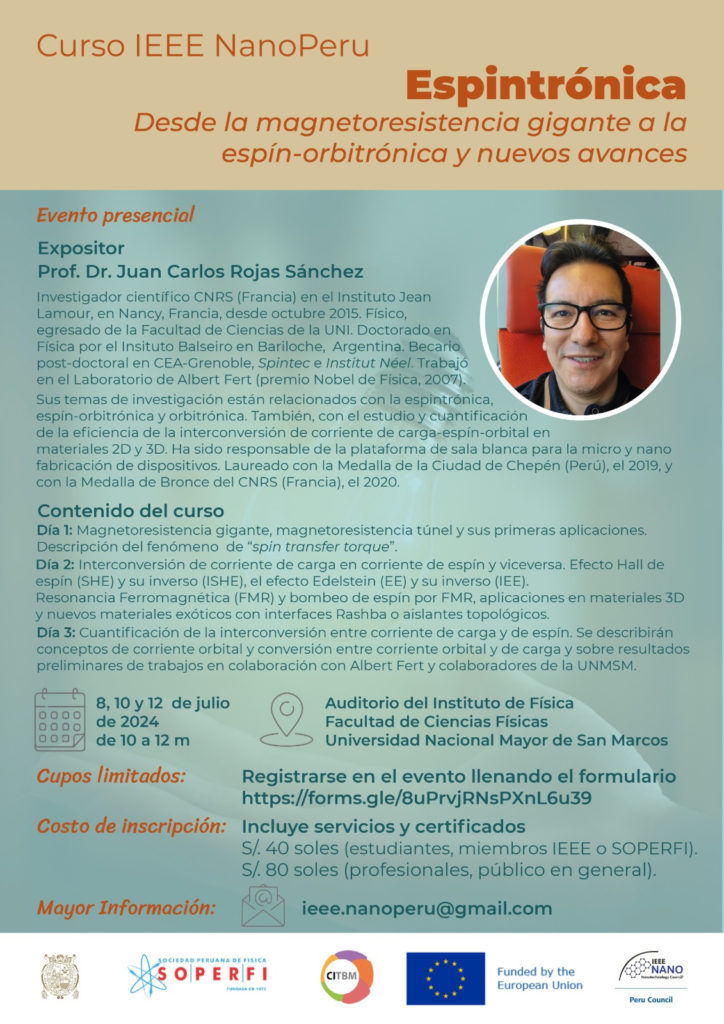IEEE International Magnetic Conference (INTERMAG 2024), Rio de Janeiro (Brazil), 5th to 10th May 2024
Lara Solís (CNEA); oral presentation: “Thermal spin-current generation in Bi-substituted YIG films with perpendicular magnetic anisotropy”. Collaboration with I. Larmour, INN Constituyentes y Bariloche, UNIZAR, Laboratoire Albert Fert
Joaquin Gajst (CNEA); poster presentation: “Strain-induced oxygen vacancies and ferromagnetic order near the interfaces in CaMnO3 thin films”; collaboration with J. Santiso (ICN2), J.P. Coronel, L. Steren y J. Gajst INN Constituyentes, F. Williams INQUIMAE BsAs
Ángel Alejandro Pérez Martínez (CONICET); poster presentation: “Influence of ferromagnetic coupling in Fe 85 Co 15 /Py bilayers on the ISHE voltage generated by spin pumping” INN Bariloche
Laura Steren (CONICET); poster presentation: “Correlation between strains and oxygen vacancies and magnetotransport properties of CaMnO3 thin films”
Collaboration with J. Santiso (ICN2), J.P. Coronel, L. Steren, A. López Pedroso & J. Gajst INN Constituyentes, F. Williams INQUIMAE BsAs, M. Aguirre, UNIZAR , S. Carreira y J. Briático Lab. Albert Fert
